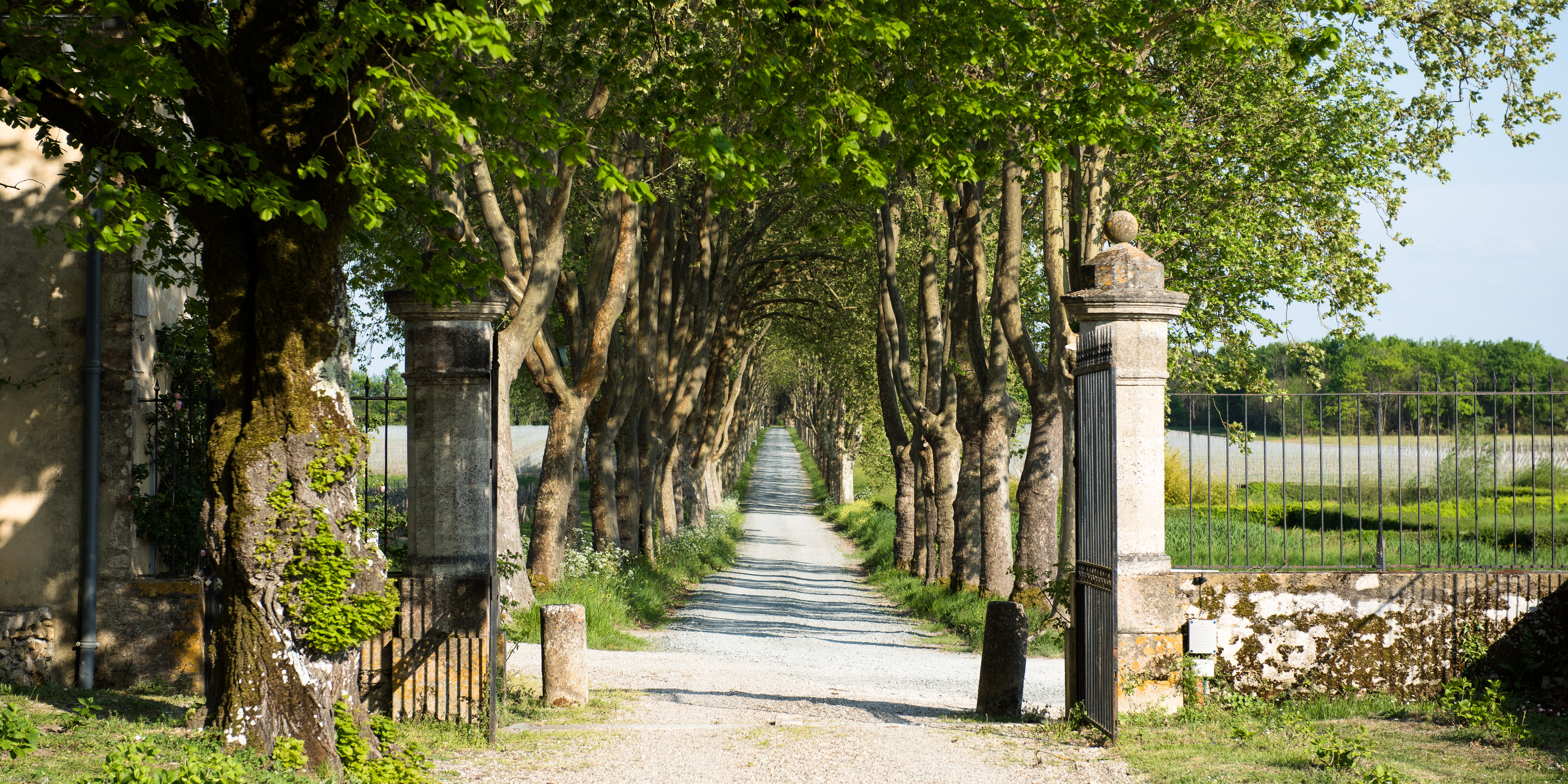Published the 01/12/2020 in Our Selection
Finding the right wine can be very hard, whether you are trying to pair with food or simply trying to find something that suits your taste buds. Most of the time you have very little information about the taste profile of a wine on the actual label. This is the case also (and maybe even particularly so) for Bordeaux wines. Bordeaux is one of the biggest winegrowing areas in the world, and here you are sure to find something you like. In two articles, we will show you some basic principles of finding what you like in the region. This is part 2 where we focus on the red wines.
Bordeaux is known worldwide for its red wines, that is a fact. 89% of wine production in Bordeaux is red wine. But that has not always been the case. You might be surprised to find out that in 1960 60% of Bordeaux wines were white (!). A general rule in Bordeaux is that red wines are blends of different grape varieties, at least when it comes to the most iconic wines. On a whole, merlot is the dominant variety with 65% of plantations, Cabernet Sauvignon second with 23% and Cabernet Franc third with 10%, leaving 2% for other red varieties such as Petit Verdot and Malbec.
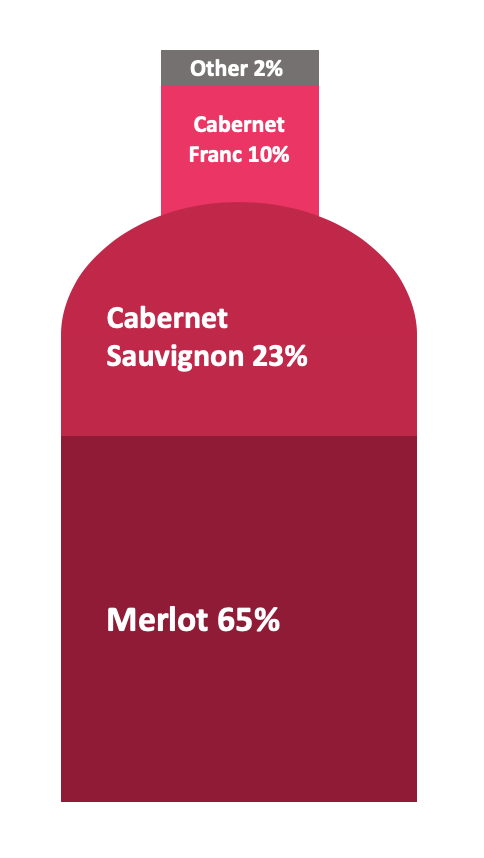
If you are on the lookout for powerful wines that can age and evolve in bottle for decades, you should turn to the Medoc. Medoc is on what is called the left-bank of Bordeaux, in between the Atlantic Ocean and the Gironde estuary (the river). Here, the ruling grape is Cabernet Sauvignon, a small, thick-skinned grape that can struggle to ripen even in other parts of Bordeaux. The top layer of soil in the Medoc is gravel, small rocks that help retain heat during colder nights and reflect early morning sunshine to fight frost and other hazards. Giving Cabernet Sauvignon an optimal environment to ripen.
In the Medoc, Cabernet Sauvignon will typically make up around two thirds of the blend and is the grape that defines the style of the area. Wines from the Medoc are normally full-bodied and very tannic, sure to leave a strong impression on your palate. Perfectly ripe Cabernet Sauvignon, often blended with Merlot and a couple of other grapes, produces rich black fruit flavours of cassis and black currant. Over time these wines pack on even more character and often lean towards tobacco, earthy and smoky aromas.
There is a lot of wine to discover in the Medoc and its many sub-appellations. The standard is extremely high with some obvious standouts embodied by the first-growth estates from Rothschild (Mouton and Lafite), Latour and Margaux. We will surely give you a deep dive article into the Medoc at a later point in time.
Perfect food pairing if you ask us: lamb from Pauillac to stay local, but any kind of roasted, braised or grilled meat will pair perfectly with these strong wines.
Our picks, winegrowers to look out for in the stores:
Top quality: Château Latour (Pauillac), Château Cos d'Estournel and Montrose (Saint-Estèphe), Léoville-Las Cases and Léoville Poyferre (Saint-Julien)... There is no lack of choice
Best value: Lynch-Bages and Pontet-Canet (Pauillac), Lafon-Rochet and Calon-Ségur (Saint-Estèphe)
Hidden gem: Château les Ormes De Pez (Saint-Estèphe), Haut-Marbuzet (Saint-Estèphe), Pédesclaux (Pauillac)
St-Emilion and neighbouring Pomerol on the right-bank of Bordeaux are known worldwide as a Merlot heaven. If you like rich and heart-warming red wines this is where you should look. Merlot as a grape does not always have the best reputation, it is fairly easy to grow and used in many bulk wines around the world. But in St-Emilion and Pomerol it shows its true colours and can generate extremely complex wines. Here, Merlot is often blended with Cabernet Franc, a grape that adds peppery notes, black fruit aromas and finesse to the blends.
So, what makes the Merlot in St-Emilion and Pomerol so special? Well, there are many reasons, but the main explanation can be found in the ground. The best areas in St-Emilion are on a limestone plateau covered with (mainly) clay. Simply put, the clay binds water and retains it for drier periods when water is scarce and cracks when it is really dry, allowing the vine roots to go deep into the soil to find the necessary water and nutrients. With thicker clay you get richer and fuller red wines.
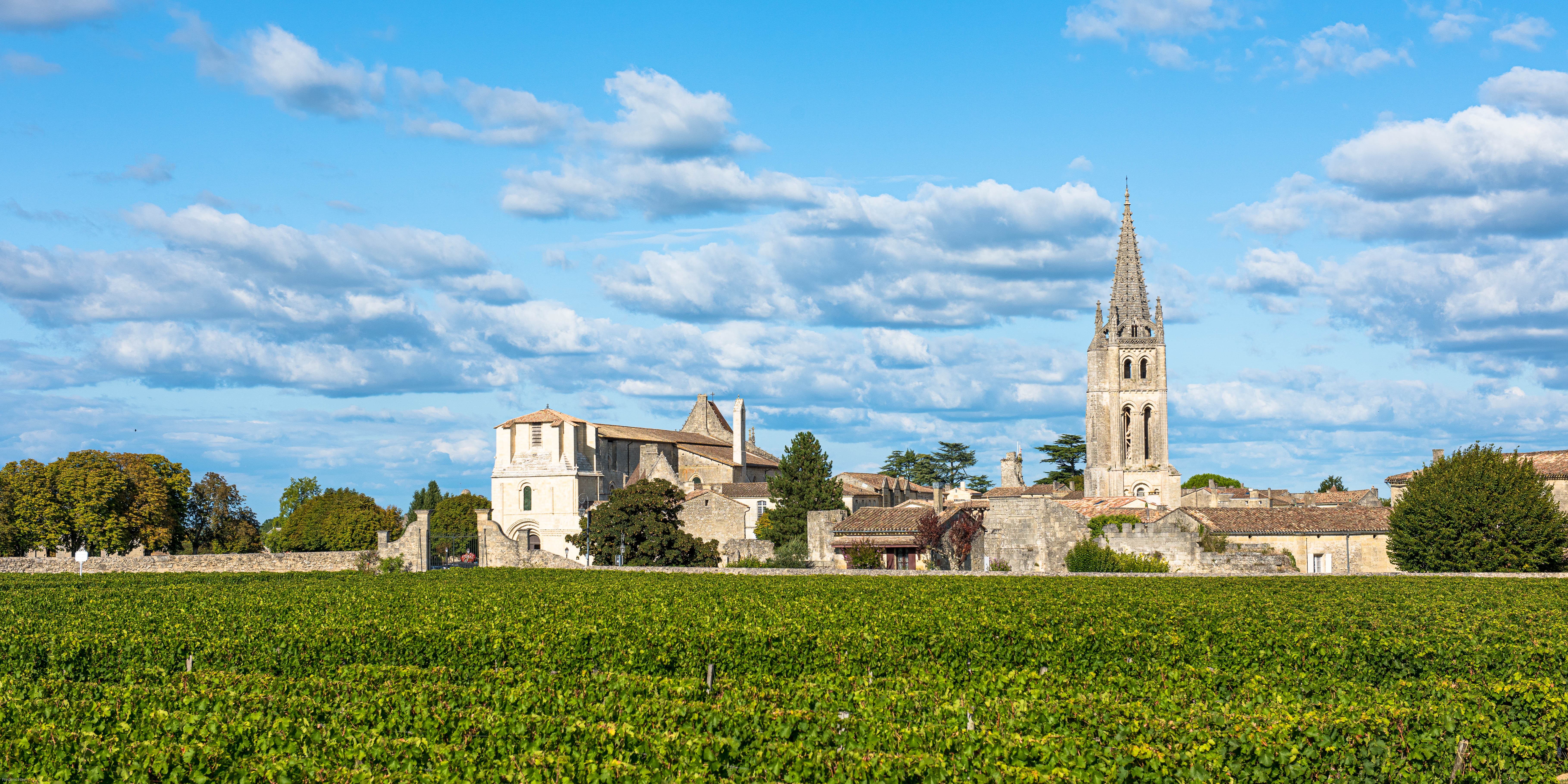
In Pomerol there is even a patch of so-called blue clay, a super dense type of clay that is almost impossible for the vine roots to penetrate. The blue clay holds a water reserve for the grape vines for the dry summer months. Because the blue clay is impermeable, the roots struggle to go deeper into the soil which makes the vines suffer. Is suffering good then? Yes, just like when you grow tomatoes the plant should always suffer somewhat to concentrate the flavours in fewer fruits. This helps give Pomerol wines strong but smooth tannins and hyper ripe dark cherry, plum and red fruit aromas.
Did you know that the city of St-Emilion is a UNESCO world heritage site? The ancient town has roots back to when the Romans started to make wine in the region in the 2nd century. A stroll through the old town with its Romanesque ruins and churches is a must for anyone visiting the region. St-Emilion is located a 45-minute drive east of Bordeaux, also easily accessible by train from the city centre.
Perfect food pairing if you ask us: grilled or braised meat is also a hit with these wines, including the famous entrecôte bordelaise grilled over vine shoots, but Comté cheese or roasted poultry will be a nice fit.
Our picks, winegrowers to look out for in the stores:
Top quality: Château Le Pin (Pomerol), Petrus (Pomerol), Château Angélus (St-Emilion), Château Cheval Blanc (St-Emilion), Chateau Ausone (St-Emilion)
Best value: Château Canon la Gaffelière (St-Emilion), Château Clinet (Pomerol), Château Lafleur de Bouard (Lalande de Pomerol)
Hidden gem: Château Nénin (Pomerol), Château Croix de Labrie (St-Emilion), Château Le Tertre Rotebeouf (Saint Emilion), Château Valandraud (St-Emilion, first garage wine... Not so hidden anymore!)
On the right-bank of the Gironde estuary, just over the water from the Médoc and the appellations of Margaux and Pauillac, you find the appellations of Bourg and Blaye. Here, winemaking has been done for almost 2000 years with Roman origins around the 2nd century. As in all of right-bank Bordeaux, Merlot is the top grape here, followed by Cabernet Franc and Cabernet Sauvignon.
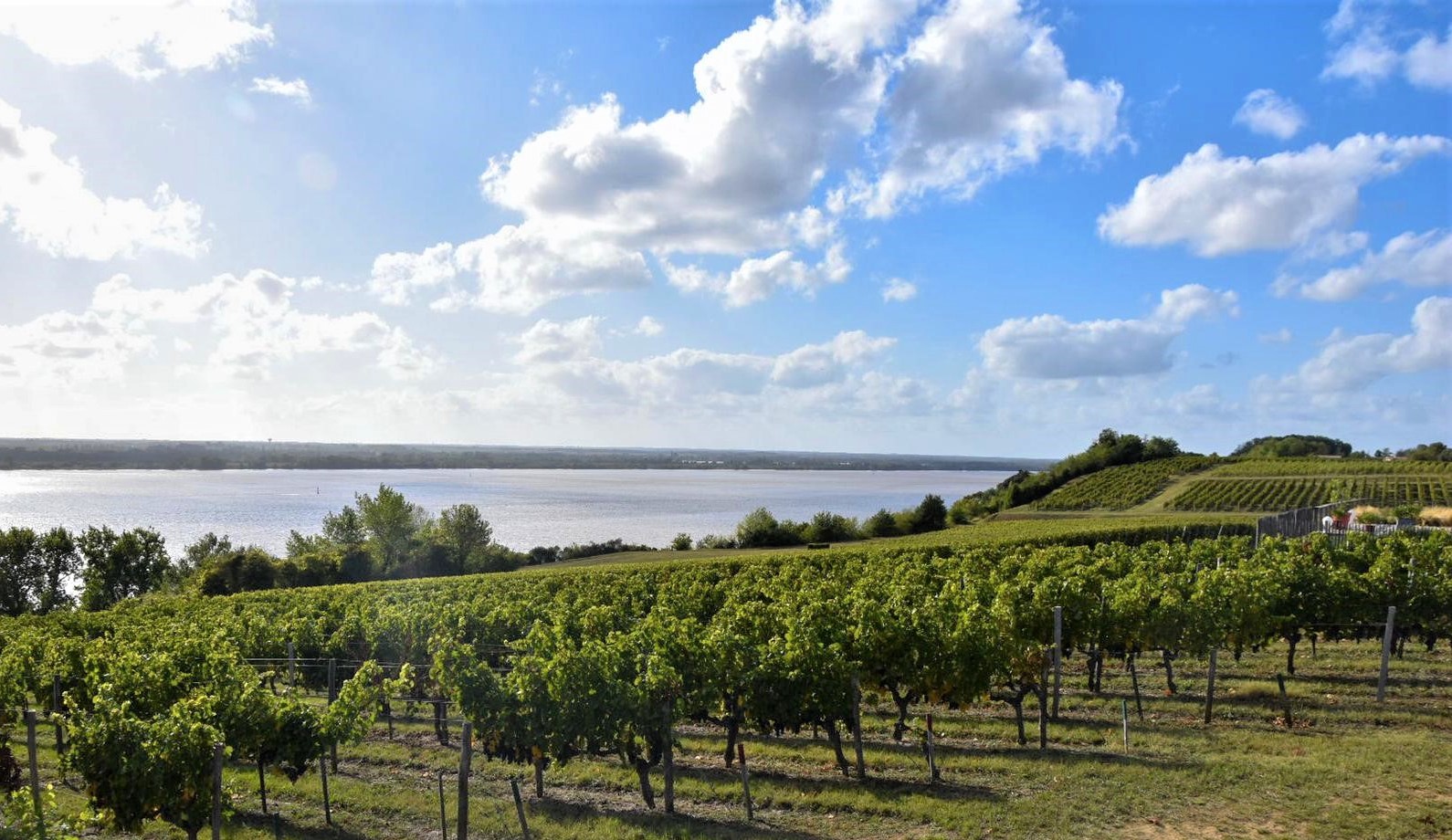
The landscape in Bourg and Blaye is hillier than the Medoc and the vineyards can be located with many different aspects, on hills with different sunshine exposure. The hills give the area a particular charm and it is special seeing vineyards stretching over hilltops down towards the river. The soil here is mostly clay on top of limestone, making it an optimal spot for Merlot in a similar way as in St-Emilion and Pomerol.
The red wines from Bourg and Blaye are easy-going and approachable, and sure to not leave a massive hole in your wallet. Wherever you turn in these regions you will find well-balanced red wines with strong smooth tannins, red and black fruit notes and sometimes a punch from French oak. Go discover the appellations of Bourg and Blaye and you will be amazed at the quality for price that you will find.
Perfect food pairing if you ask us: a heart-warming mushroom soup for cold winter days.
Our picks, winegrowers to look out for in the stores:
Château Roc de Cambes (Bourg), Château Des Tourtes (Blaye Côtes de Bordeaux), Château Le Clos du Notaire (Côtes de Bourg), Château Falfas (Côtes de Bourg, Biodynamic), Château Roland La Garde (Blaye Côtes de Bordeaux)
First off, rosé from Bordeaux should not get mixed up with Clairet which is similar but a different thing. Clairet is the closest product to the wines that were shipped to England during the middle ages and was a hugely popular wine in the past and is still produced today. Clairet is something between a red wine and a rosé, darker in colour than a rosé, and a separate appellation from Bordeaux rosé. In comparison, the Clairet wines spend longer times in contact with the grape skins (that give the wine its colour) compared to the rosés.
You can find exceptional rosé in Bordeaux, many of the very best estates make rosé, but normally not every vintage. Sometimes younger vines seen as unfit to produce a red wine are used to make rosé. Other times some of the juice is "bled" from the maceration tanks (to concentrate the remaining red wine) and used to make rosé. Bordeaux rosé is lesser known than the red wines and the white wines from Bordeaux but are gaining in popularity. In Bordeaux the rosé is made from the typical red grape varieties (Merlot, Cabernet Sauvignon, Cabernet Franc) and the juice goes through a short maceration in contact with the skins and is then fermented like a white wine.
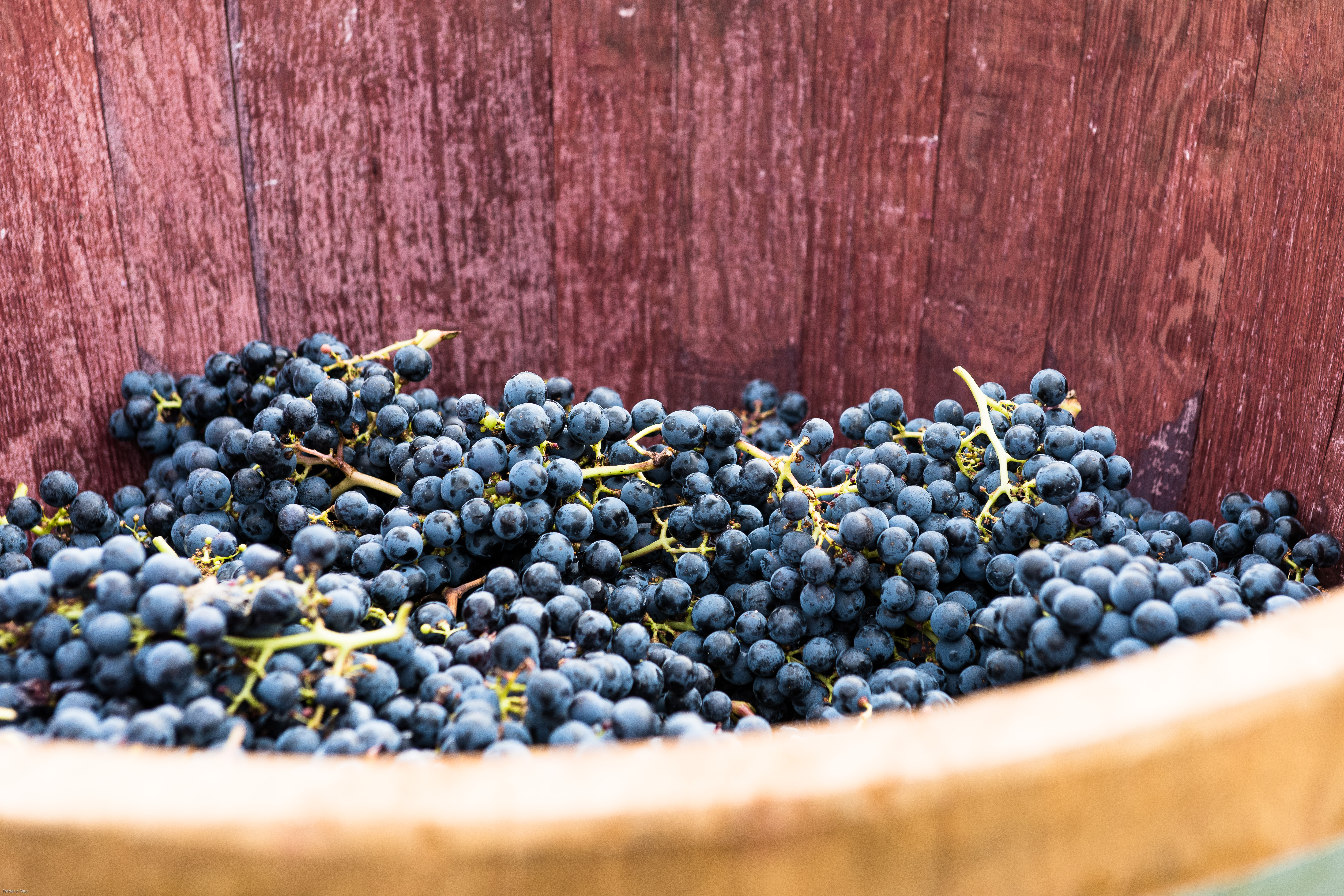
Rosé wines in Bordeaux are mostly found through the appellation Bordeaux Rosé, but also all over the region as "Vin de Bordeaux". Rosé from Bordeaux takes on fruity red fruit flavours and are packed with character from the Merlot and Cabernet Sauvignon grapes. Keep your eyes open and you might come across top chateaux in Bordeaux releasing excellent rosés when the vintage permits.
Perfect food pairing if you ask us: fruity rosé wines can pair well with richer seafood, shrimps and lobster, or soft cheeses such as brie or camembert. Duck breast will also pair perfectly.
Our picks, winegrowers to look out for in the stores:
Carrelet d'Haut-Peyrat, Clarendelle rosé (Domaine Clarence Dillon), Le Rosé de Floridène (Clos Floridène), la Croix de Carbonnieux (Pessac-Léognan), Château Penin (Bordeaux)
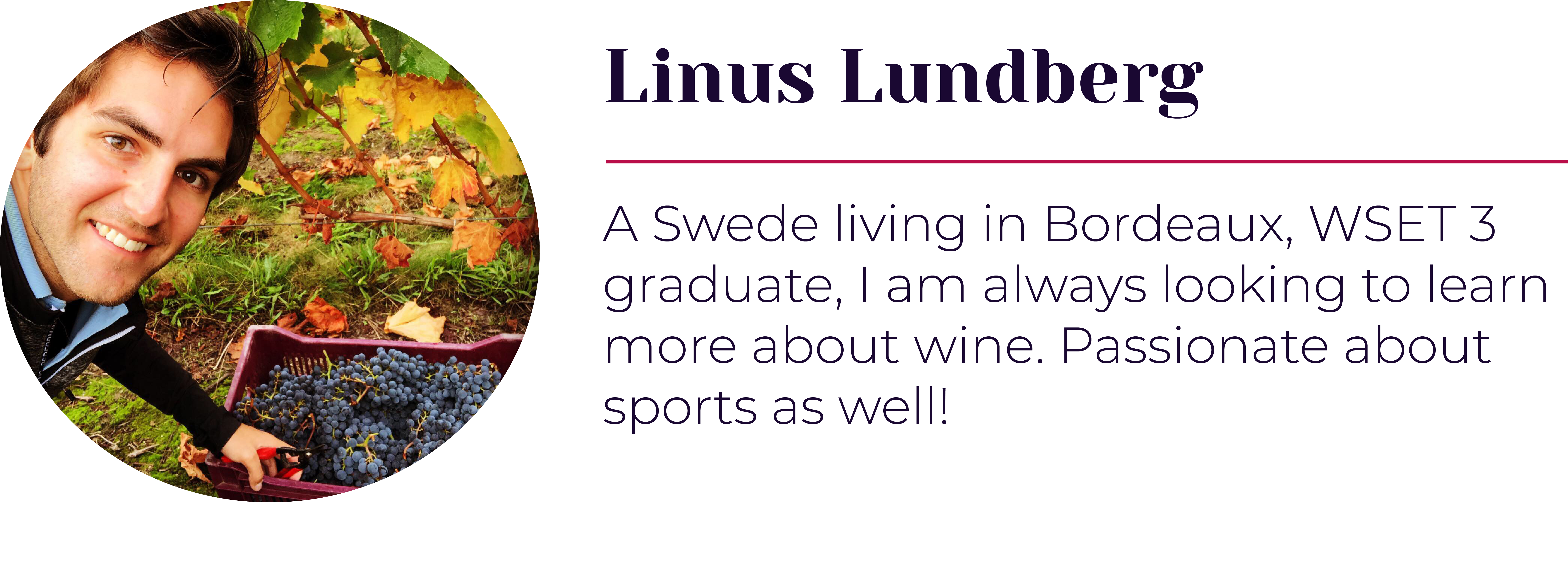
For more useful information and insights on Bordeaux wines, and much, much more, sign up for our newsletter below!
